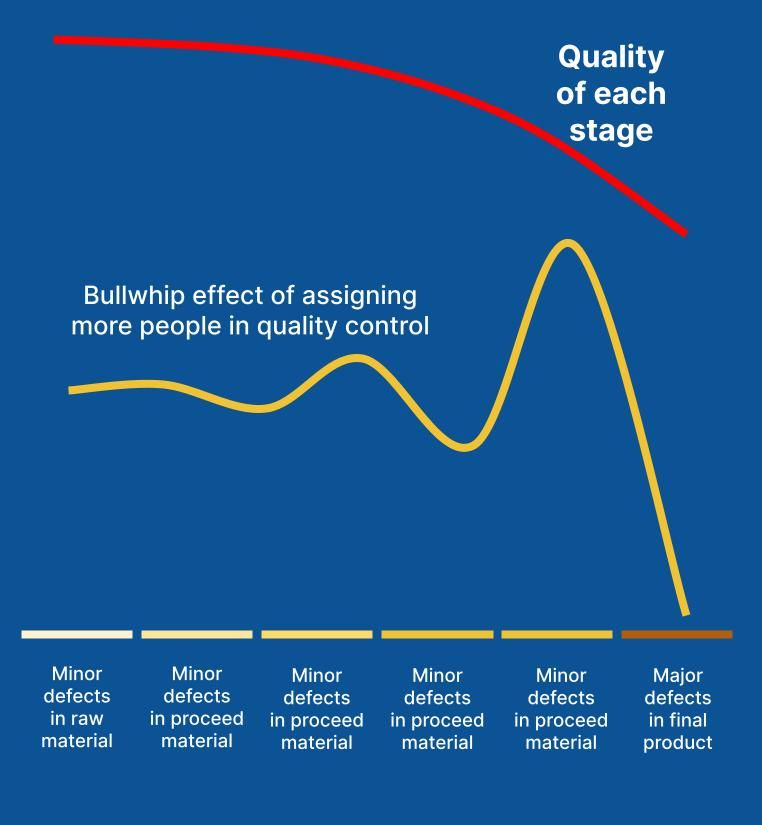Breaking the Quality Bullwhip Effect: A Smoother Path to Manufacturing Excellence

In the world of manufacturing, maintaining consistent quality is a paramount goal. However, have you ever encountered a manufacturer that struggles to keep its quality consistent on a daily basis and seems trapped in a cycle of minor issues snowballing into major problems? This phenomenon is known as the "Quality Bullwhip Effect," and it's a challenge that many businesses face.
The Unfolding of the Quality Bullwhip Effect
It typically begins with minor quality issues related to raw materials or processes at the initial production stage. These seemingly insignificant problems then ripple through the manufacturing process, gaining momentum and impact at each subsequent stage. By the time the products reach the end of the production line, the quality discrepancies have grown substantially.
The consequences are far-reaching. End-users receive products with noticeable quality issues, leading to significant feedback and complaints directed at the distributors. To address these concerns, distributors may deploy quality control teams to assess the products. Unfortunately, this often results in the identification of even more issues, triggering a cascade of feedback that travels upstream to the previous producer and beyond.
The Costly Domino Effect
The Quality Bullwhip Effect isn't just a matter of quality; it's also a financial burden. The additional costs incurred due to the need for quality checks, returns, and rework can significantly inflate the overall production cost. Ultimately, this drives up the price of the final product, leaving both manufacturers and consumers with a less-than-ideal outcome.
A Smoother, Cost-Effective Solution
The solution to mitigating the Quality Bullwhip Effect lies in proactive communication and collaboration between different stages of the production process. Rather than allowing quality issues to snowball, early detection and correction can make a world of difference.
Imagine a scenario where each stage of production is equipped to identify and report quality issues in real-time. By preparing reports and promptly sending them to the next node in the production chain, manufacturers can tackle problems swiftly, before they escalate. This approach not only prevents quality issues from compounding but also reduces the associated costs.

Using automatic inspection machines (like fabriqc.com, partqc.com) or asking operators to record these issues in production and send the result to your buyers will decrease your and their costs.
Conclusion: Streamlining Quality Assurance
In the manufacturing world, the Quality Bullwhip Effect is a challenge that can disrupt operations and inflate costs. However, by adopting a proactive approach to quality assurance and fostering transparent communication between production stages, businesses can break the cycle. In doing so, they can ensure a smoother, more cost-effective manufacturing process that benefits both the manufacturer and the end-user. It's not just about producing quality products; it's about streamlining the entire quality assurance journey.
